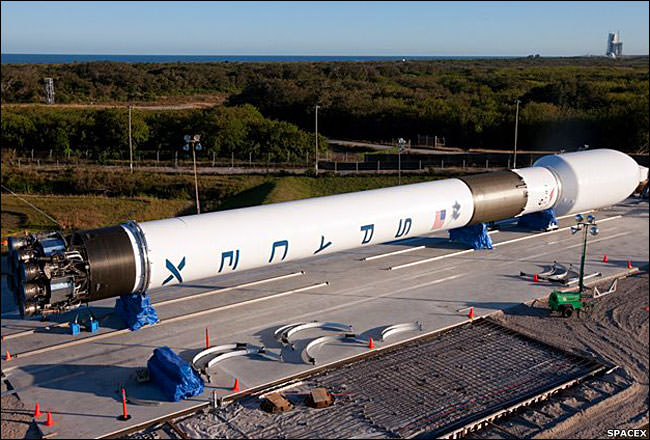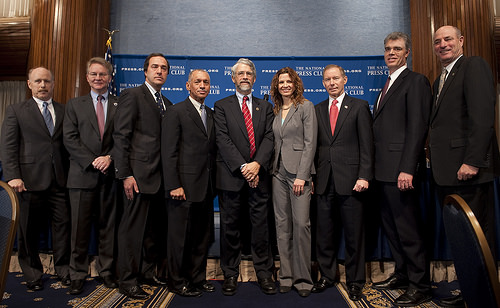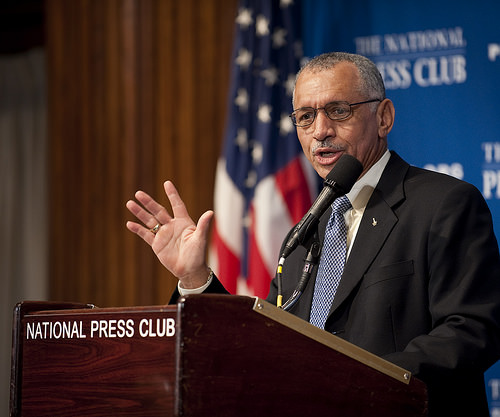[/caption]
The US House of Representatives voted late Wednesday to accept the Senate’s version of NASA’s $19 billion fiscal 2011 budget proposal. The bill will now go to President Obama for his approval and signature, and if approved would provide $60 billion for NASA over the next three years, with money for development of commercial spacecraft, a heavy lift vehicle for NASA, technology development – including in-space tech such as fuel depots – and one additional shuttle flight in 2011. The Constellation program would be officially dead, although the Orion capsule would still be developed, and the next human destination in space will likely be an asteroid.
The House voted 304 to 118, with no amendments allowed, in favor to approve the budget in a final series of votes before Congress recesses for the November 2 mid-term elections. The bill would keep most of the major changes in NASA’s future that Obama proposed in February of this year, while giving better direction as to where, when and how.
You can see a list of how the representatives voted at this link.
$3.99 billion of the new budget would go towards exploration in fiscal 2011, $1.3 billion for a new deep space capsule and $1.9 billion for initial development of a new heavy lift rocket.
Additionally,the bill would provide $144 million to support on-going development of unmanned spacecraft to deliver cargo to the International Space Station and $312 million for commercial crew spacecraft. Space operations would receive $5 billion, including $2.8 billion for the International Space Station.
NASA Administrator Charlie Bolden was understandably relieved and ecstatic about the passage.
“This important vote today in the House of Representatives on a comprehensive NASA authorization charts a vital new future for the course of human space exploration,” Bolden said in a statement. “The President has laid out an ambitious new plan for NASA that pioneers new frontiers of innovation and discovery. The plan invests more in NASA; extends the life of the International Space Station; launches a commercial space transportation industry; fosters the development of path-breaking technologies; and helps create thousands of new jobs. Passage of this bill represents an important step forward towards helping us achieve the key goals set by the President. “
“This is a great night for our nation’s space program,” Sen. Bill Nelson, a Florida Democrat, said in a statement. “This bill is a blueprint for how we will proceed for the next three years and will allow NASA to begin planning for an extra shuttle flight. Now we have to make sure the agency gets the funding necessary to get the job done.”
There were some critics of the bill however. Former NASA administrator Mike Griffin said in an article in the Huntsville Times this week, “While it is true that the Senate bill offers some improvement over the Obama administration’s ill-advised plan for NASA, in my considered opinion it is not enough better to warrant its support in law. As happened after the loss of space shuttle Columbia, it is time once again to ask ourselves whether we want to have a real space program, or not. If we do, then the Senate bill won’t get us there. If we cannot do better than that, then I believe we have reached the point where it is better to allow the damage which has been brought about by the administration’s actions to play out to its conclusion than to accept half-measures in an attempt at remediation.”
And Rep. Gabrielle Giffords, D-Arizona (who is married to shuttle commander Mark Kelly) said she doesn’t like the idea of Congress deciding what heavy lift vehicle should be built. “In short, the Senate bill forces NASA to build a rocket that doesn’t meet its needs, with a budget that’s not adequate to do the job and on a schedule that NASA’s own analysis says is unrealistic,” she said after the vote Wednesday night. “That is not my idea of an executable and sustainable human spaceflight program.”
She also said the legislation “lacks serious budgetary discipline” and includes an “unfunded mandate to keep the shuttle program going through all of fiscal year 2011 even after the shuttle is retired, which NASA estimates will cost the agency more than half a billion dollars.”
You can read more reactions over at Jeff Foust’s Space Politics website, and see this link from Hobby Space for a plethora of news reports about the bill’s passage.
Sources: NASA, AFP Spaceflightnow.com





